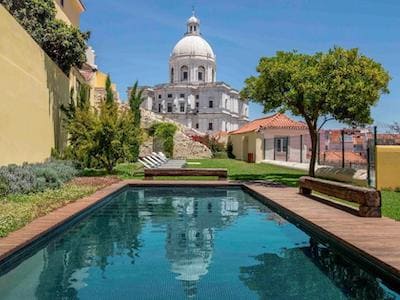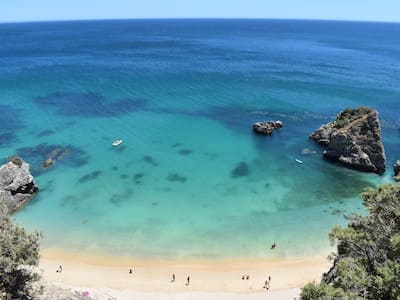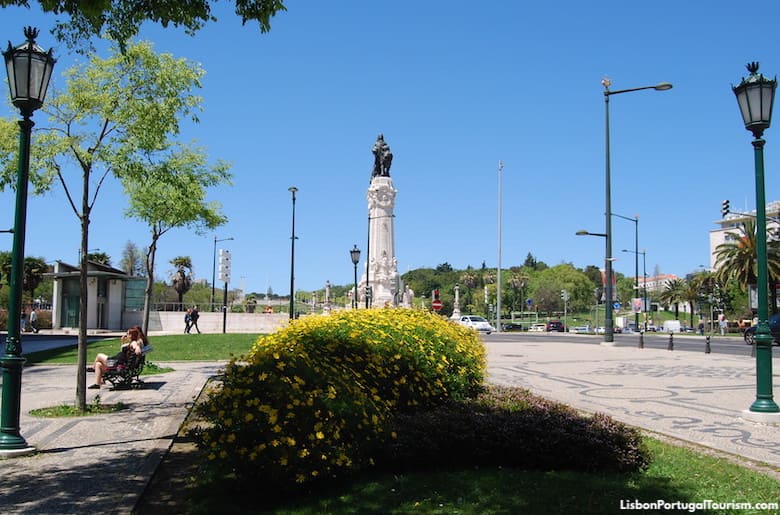
The northern end of Avenida da Liberdade, by Praça Marquês de Pombal
Like many other major European boulevards, Avenida da Liberdade was inspired by Paris’ Champs-Élysées. It's a tree-lined avenue connecting two squares (Praça dos Restauradores and Praça Marquês de Pombal), and is known for its luxury stores (which actually start on Rua Castilho to the north). However, it’s not all about luxury -- there are several kiosks scattered along its 1.5 kilometers (1 mile), specializing in different foods and drinks, at reasonable prices.
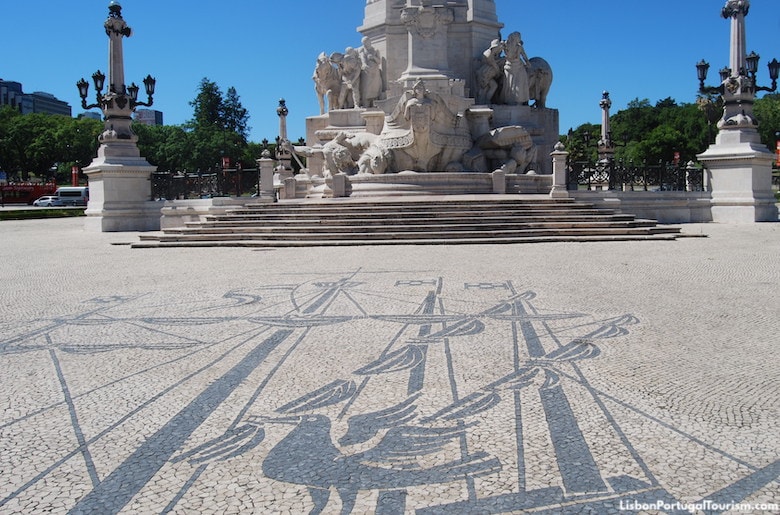
The cobblestone pavement and the monument at the center of Praça Marquês de Pombal
The avenue is beautifully paved with Portugal’s traditional cobbled designs, and the artistic pavers are honored with a monument in a corner of Praça dos Restauradores. Inspired by Roman mosaics, these pavements originated in Lisbon during the city’s post-1755 earthquake reconstruction, and on Avenida da Liberdade they feature abstract and floral designs. The designs on the roundabout at the center of Praça Marquês de Pombal create Lisbon’s arms -- two crows on a caravel.
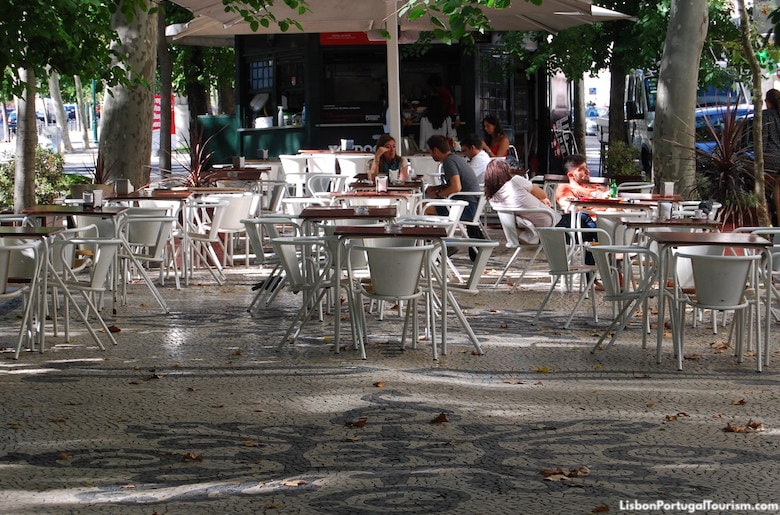
Kiosk and the traditional cobblestone designs on Avenida da Liberdade
This is also a theater district, and there are some elegant buildings down the avenue, although many were torn down for newer constructions in the mid-20th century. Some attractive and prize-winning architecture remains, like that found on numbers 206-218, which is adorned with art nouveau glass (it currently houses a Prada store). Many of the other constructions are now hotels, while the center of the avenue is filled with plants, fountains, and statues.
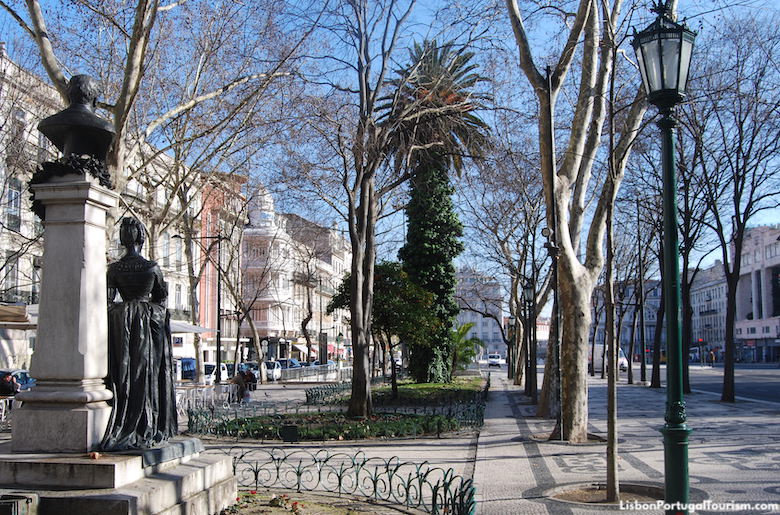
The southern end of Avenida da Liberdade, by Praça dos Restauradores
Going up the hill to the east (on Elevador do Lavra, Lisbon’s oldest funicular), you reach Pena, a more traditional neighborhood with a little-known viewpoint, the Miradouro do Torel.
What to See and Do on Avenida da Liberdade
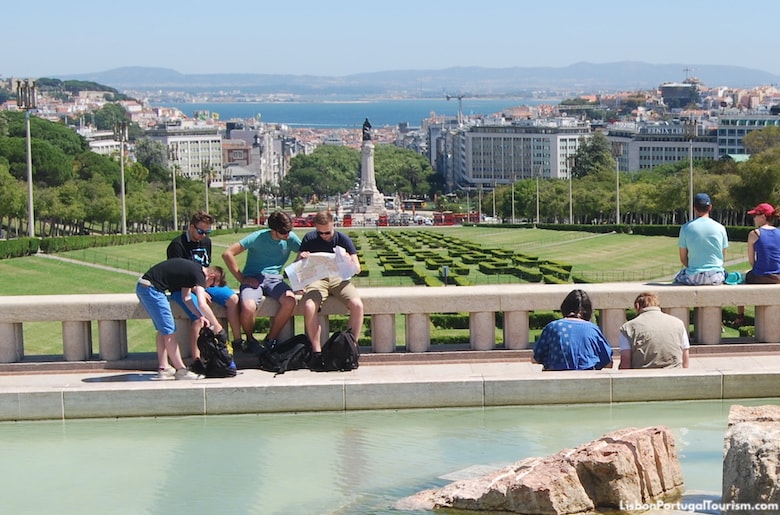
The biggest park in central Lisbon offers a panoramic view of the city and a greenhouse filled with exotic species of plants from tropical climates. It’s also home to a beautifully tiled building hosting public and private events.
See the Edward VII Park Visitor's Guide.
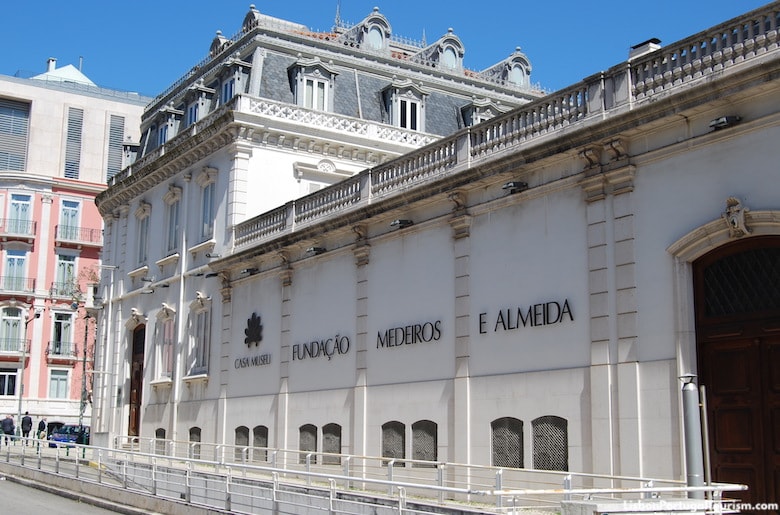
This unsung gem is one of Lisbon’s most surprising attractions. It’s a mansion turned into a museum, displaying an impressive collection put together by a renowned businessman. In 25 rooms are paintings by Rubens and Tiepolo, a Rembrandt portrait, a notable collection of clocks, and some of the first Chinese porcelain to arrive in Europe, among other precious pieces.
See the Medeiros e Almeida Museum Visitor's Guide.
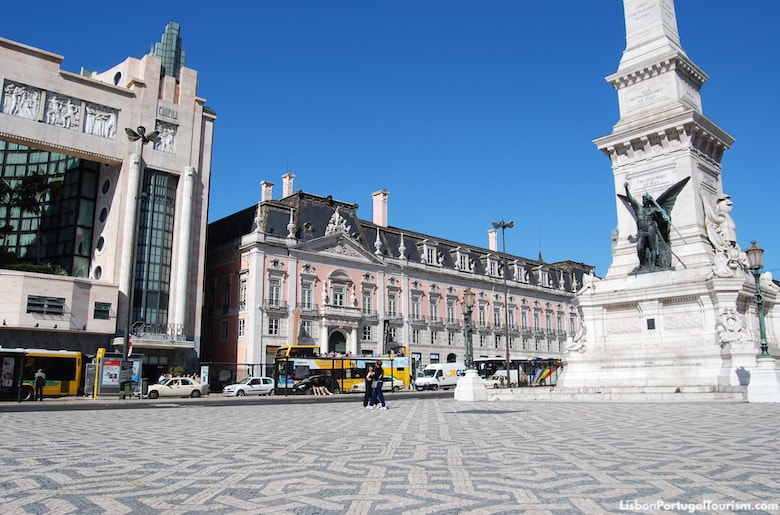
Named after the restoration of the Portuguese crown after 60 years of the Iberian Union in 1640, this square has a monumental obelisk at its center to commemorate the event. Surrounding it is a number of attractive buildings, including Foz Palace, a beautiful 18th-century palace that houses one of the city's tourist offices. Next to it is one of Lisbon's emblematic funiculars, the Elevador da Glória, which connects this part of town to Bairro Alto.
See the Praça dos Restauradores Visitor's Guide.
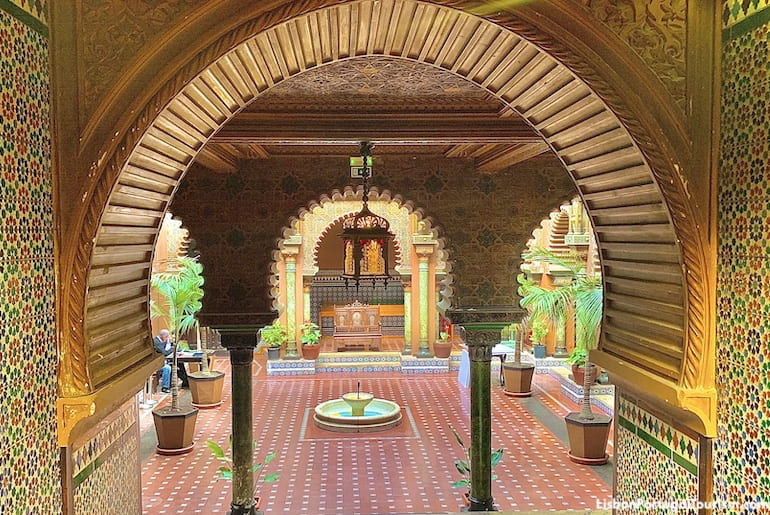
A palatial residence from the 1600s was turned into a social club for the people who moved to Lisbon from the Alentejo region. From the outside, on the pedestrian Rua das Portas de Santo Antão (see below), no one can guess the stunning interior, which mixes Moorish Revival and rococo architecture. Doors are always open to visitors, who are welcomed by an unexpected Moorish-style courtyard, while upstairs is a Louis XVI-style ballroom. On this upper floor is a restaurant with two dining rooms lined with beautiful tiles from the 19th and 20th centuries. It serves traditional Portuguese cuisine, with a focus on the regional specialties of the Alentejo.
See the Casa do Alentejo Visitor's Guide.
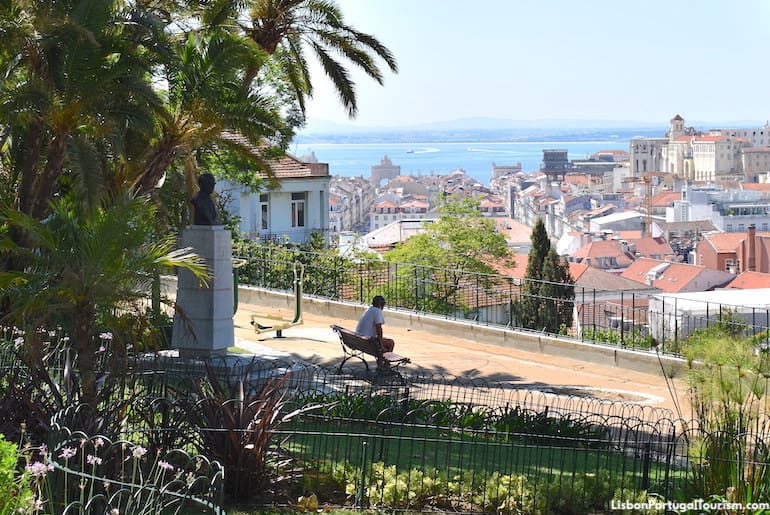
Named after its former owner, this now-public garden at the top of a hill opened in the 1960s with a view over downtown and Avenida da Liberdade. It remains one of the best hideaways in the city, with a café and a pond that sometimes turns into a pool in the summer.
See the Torel Viewpoint Visitor's Guide.
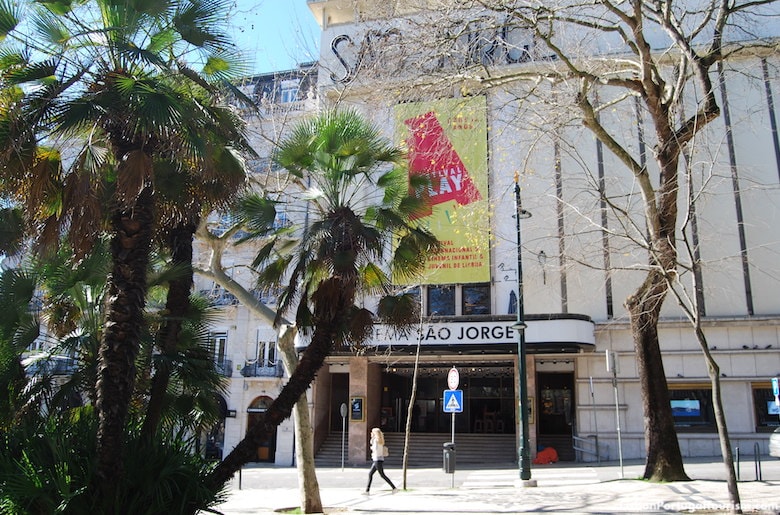
Inaugurated in 1950 with a screening of the classic "The Red Shoes,” this was one of Lisbon’s grandest movie theaters. Modern-day multiplexes led to its demise, but it's been resuscitated as the venue for a number of film festivals that take place throughout the year. The biggest are the IndieLisboa Independent Film Festival (in the spring) and QueerLisboa, the city's gay and lesbian film festival (in September). If you’re a cinema buff, always pass by this theater when you’re in town.
Avenida da Liberdade, 175
Opens every day
www.cinemasaojorge.pt
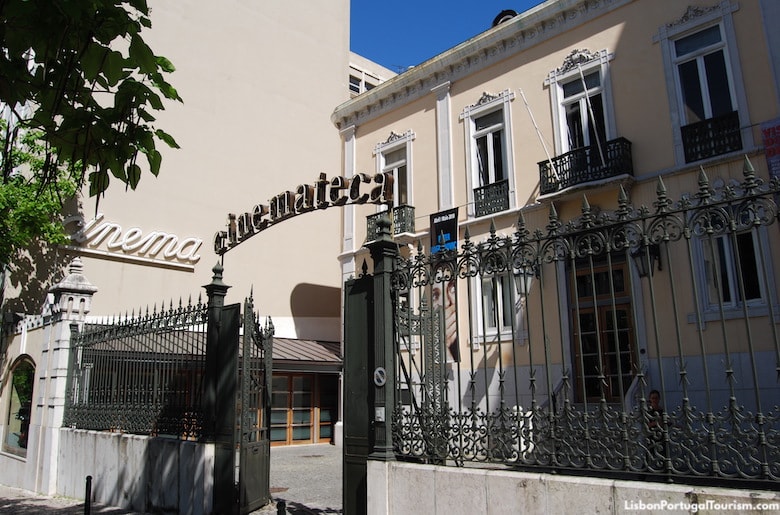
Perfect for a rainy day, Lisbon’s film museum is a wonderful place to see Hollywood classics and European art films. They’re screened in their original language with Portuguese or English subtitles. Occasionally, it hosts retrospectives of the most acclaimed film directors. Be sure to note the 19th-century film equipment throughout the art nouveau space and the neo-Moorish atrium, as well as check out the books and photo archive in the library. There is also a cafeteria, for a meal before or after a screening (its open-air terrace is quite pleasant on sunny days). Be sure to also pass by the bookstore, which includes magazines and DVDs related to film and arts in general.
Rua Barata Salgueiro, 39
It's closed on Sundays
www.cinemateca.pt
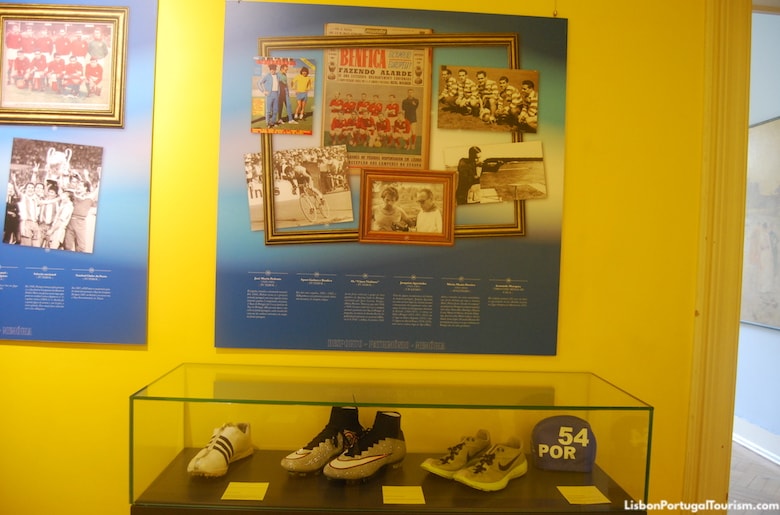
This museum took over part of the beautiful Foz Palace in Praça dos Restauradores (see above) in 2012. It presents the history of sports in Portugal and includes a sports-related library with around 60,000 books in different languages, including the curious 16th-century "De Arte Gymnastica" by Hieronymi Mercurialis, considered the first sports book to ever be published in the world. The collection is shown in temporary exhibitions, and among the pieces on display you may see equipment worn by Olympic runner Rosa Mota, a sneaker worn by triple jump champion Nelson Évora when he won the gold medal at the 2008 Olympics, a Golden Shoe awarded to the great footballer Eusébio, and cleats worn by Cristiano Ronaldo.
See the National Sports Museum Visitor's Guide.
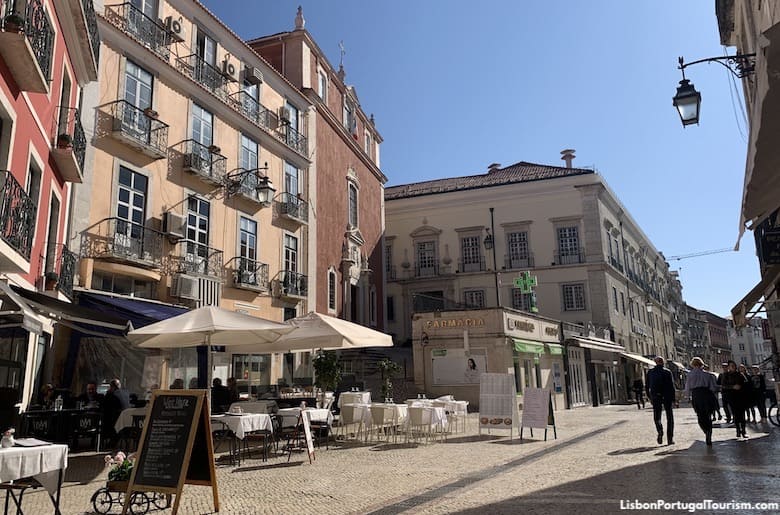
One of the gateways (“portas”) to the city in the 1400s, this pedestrian street, parallel to Avenida da Liberdade, is now known for its outdoor restaurants. It’s a very touristy street, but there are about a handful of recommended places to eat, specializing in spit-roasted chicken and traditional Portuguese cuisine. It’s also home to theaters, the church of Lisbon’s French community, and the palatial Casa do Alentejo listed above.
See the Rua das Portas de Santo Antão Visitor's Guide.
How to Get to Avenida da Liberdade
Avenida da Liberdade is within walking distance of Baixa, the downtown district. It can also be reached by metro, on the blue line (Restauradores, Avenida, or Marquês de Pombal stations). Those who find themselves in the higher districts of Bairro Alto and Príncipe Real, may go down the hill to Avenida da Liberdade on the Glória funicular.
You may ride the metro, the funiculars, buses, trams and trains for free with the Lisboa Card.
Where to Stay on Avenida da Liberdade
Avenida da Liberdade has Lisbon’s biggest concentration of 5-star hotels, but there are also more affordable 4-star properties. Staying on or around the Avenida means being within walking distance of downtown and the waterfront, and with easy access to transportation to other parts of the city, including the airport. Those who like grand classic hotels should stay at the Avenida Palace, while those who want a place with views should choose Altis Avenida. For those who prefer smaller boutique hotels there are the Valverde and the Heritage Avenida Liberdade.
For more details and recommendations, see the best hotels on Avenida da Liberdade.

